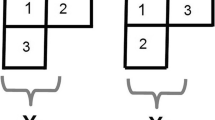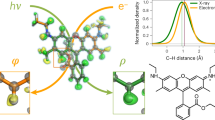Abstract
ALL those organic compounds which have until now yielded to quantitative X-ray analysis display some element of molecular symmetry in the crystal. The structure of the complete chemical molecule can then be built up from a fraction by symmetry operations, thus greatly simplifying the analysis. But some of the most interesting structures have a lower symmetry, and in these cases the molecule must be treated as a whole. This applies to resorcinol, space group C92v (Pna), a = 10·53, b = 9·53, c = 5·66 A., where the asymmetric unit consists of one chemical molecule. A quantitative analysis of this compound has now been carried out, and the preliminary results have been refined by a double Fourier synthesis which is shown in Fig. 1.
This is a preview of subscription content, access via your institution
Access options
Subscribe to this journal
Receive 51 print issues and online access
$199.00 per year
only $3.90 per issue
Buy this article
- Purchase on Springer Link
- Instant access to full article PDF
Prices may be subject to local taxes which are calculated during checkout
Similar content being viewed by others
References
Proc. Roy. Soc., A, 151, 384; 1935.
Author information
Authors and Affiliations
Rights and permissions
About this article
Cite this article
ROBERTSON, J. A Molecular Map of Resorcinol. Nature 136, 755–756 (1935). https://doi.org/10.1038/136755c0
Published:
Issue Date:
DOI: https://doi.org/10.1038/136755c0
Comments
By submitting a comment you agree to abide by our Terms and Community Guidelines. If you find something abusive or that does not comply with our terms or guidelines please flag it as inappropriate.



